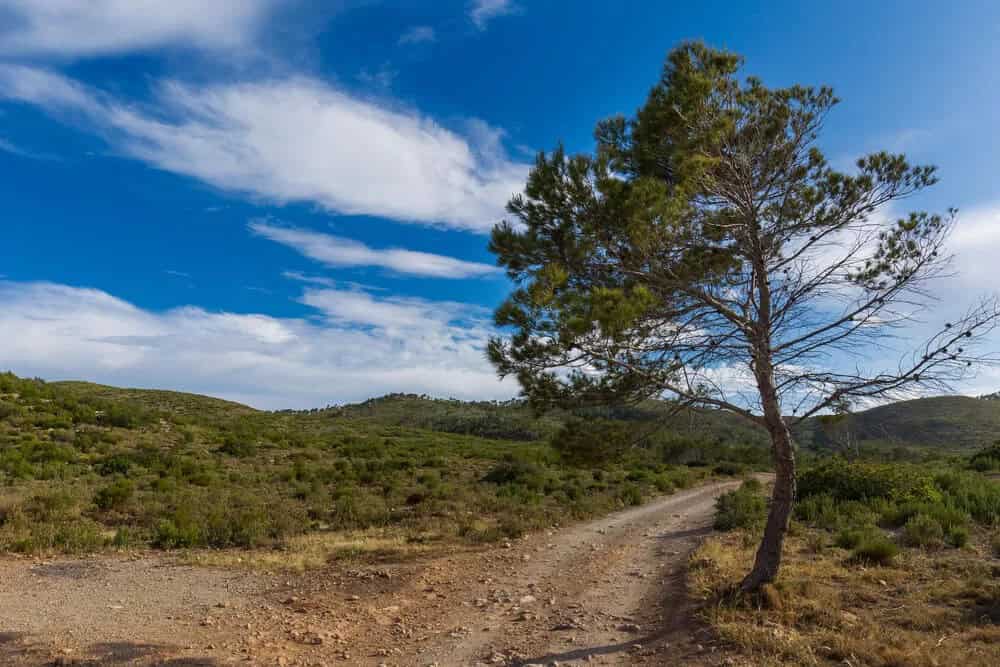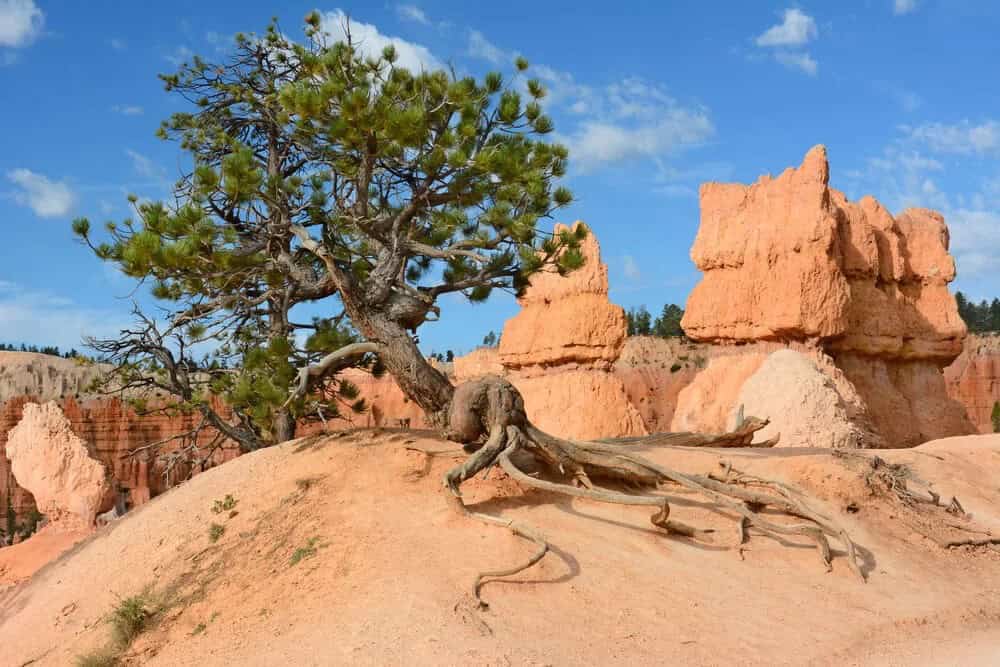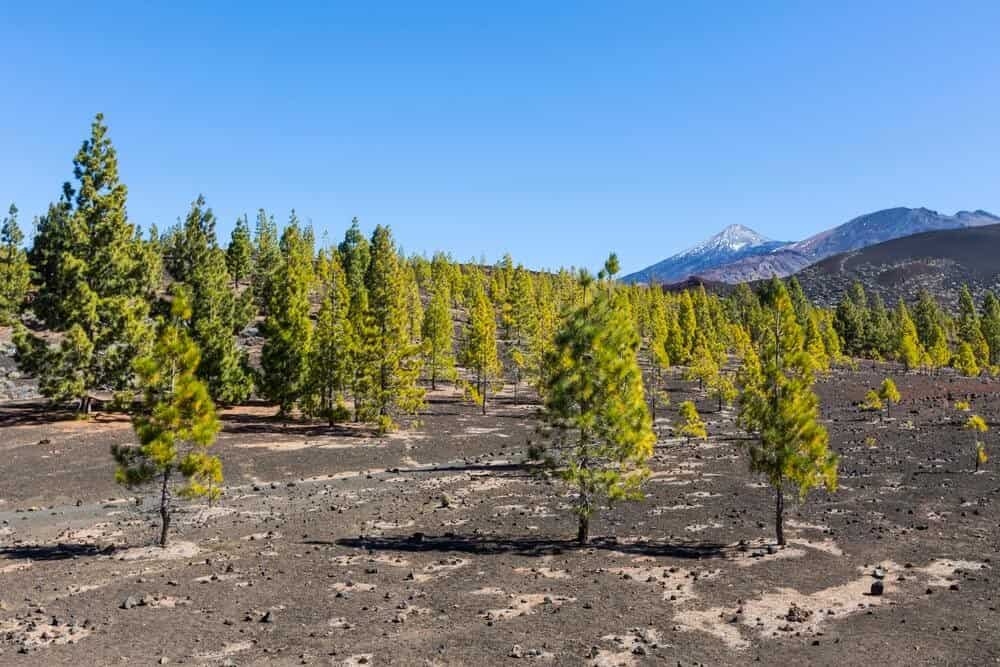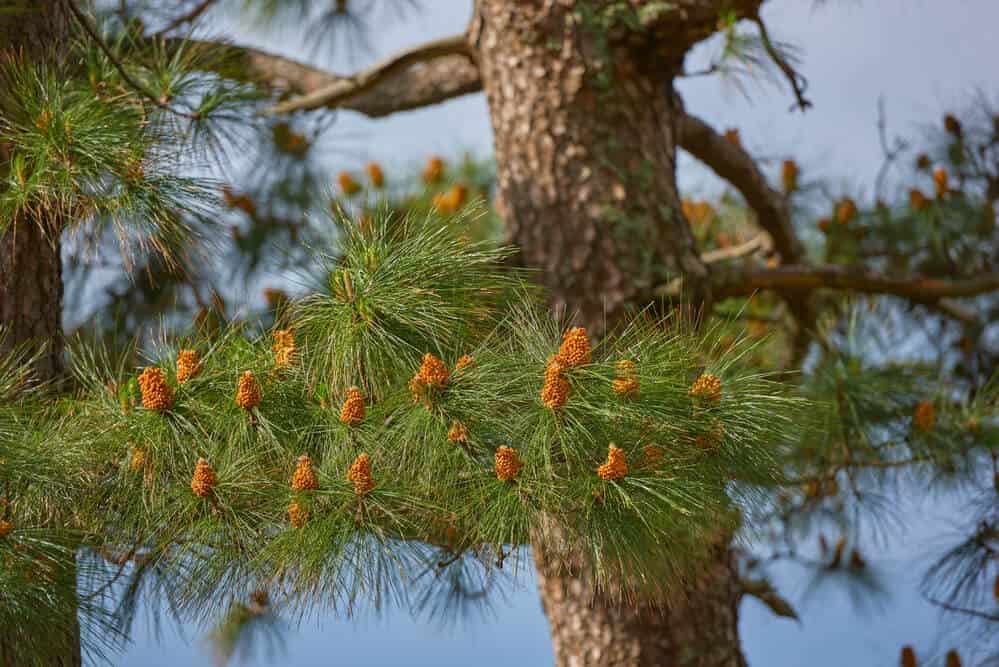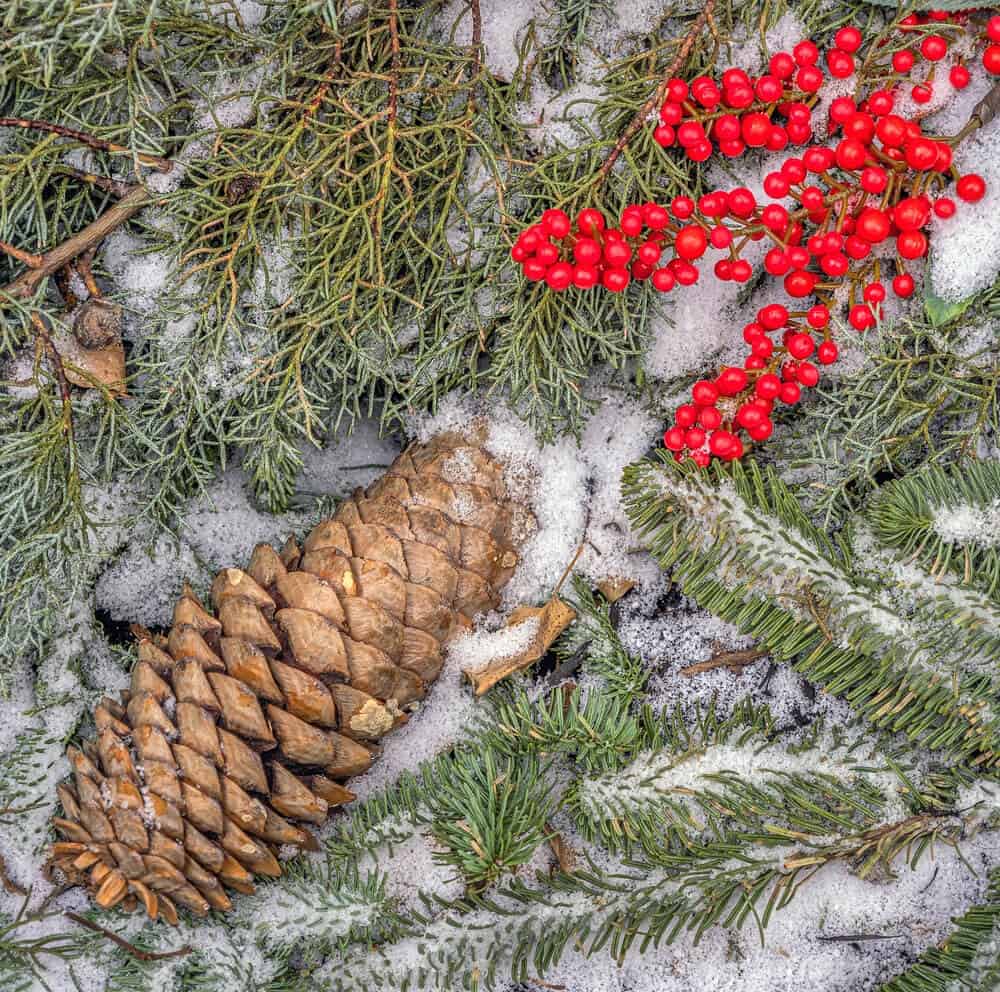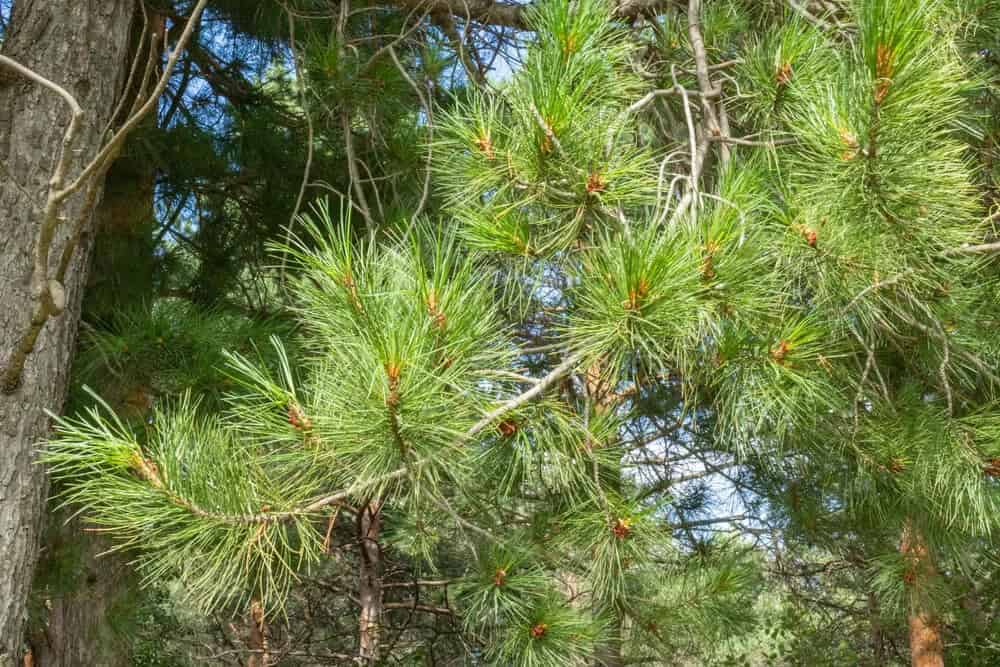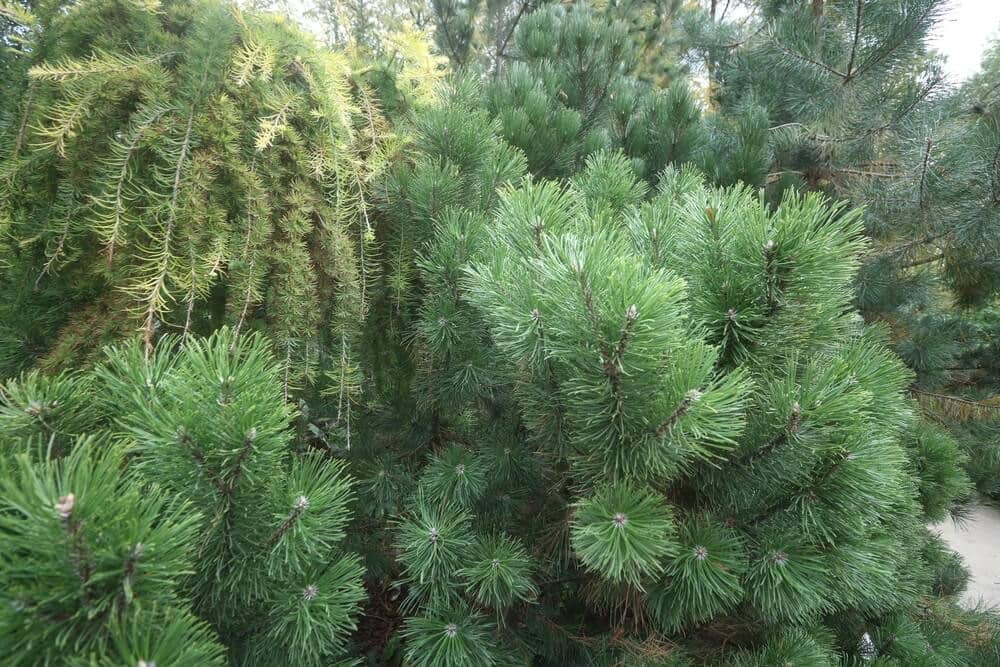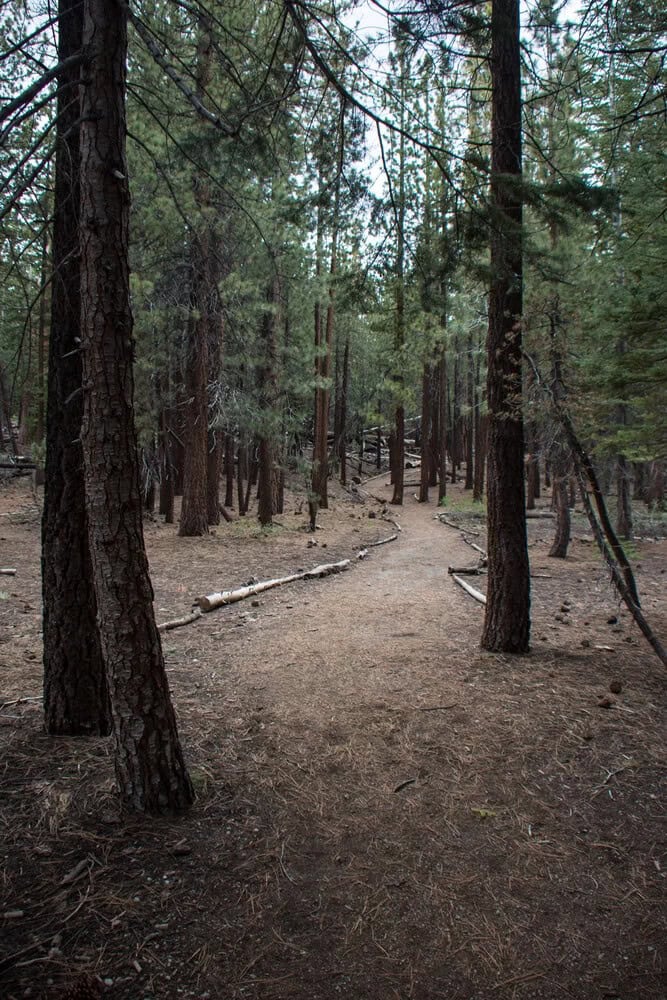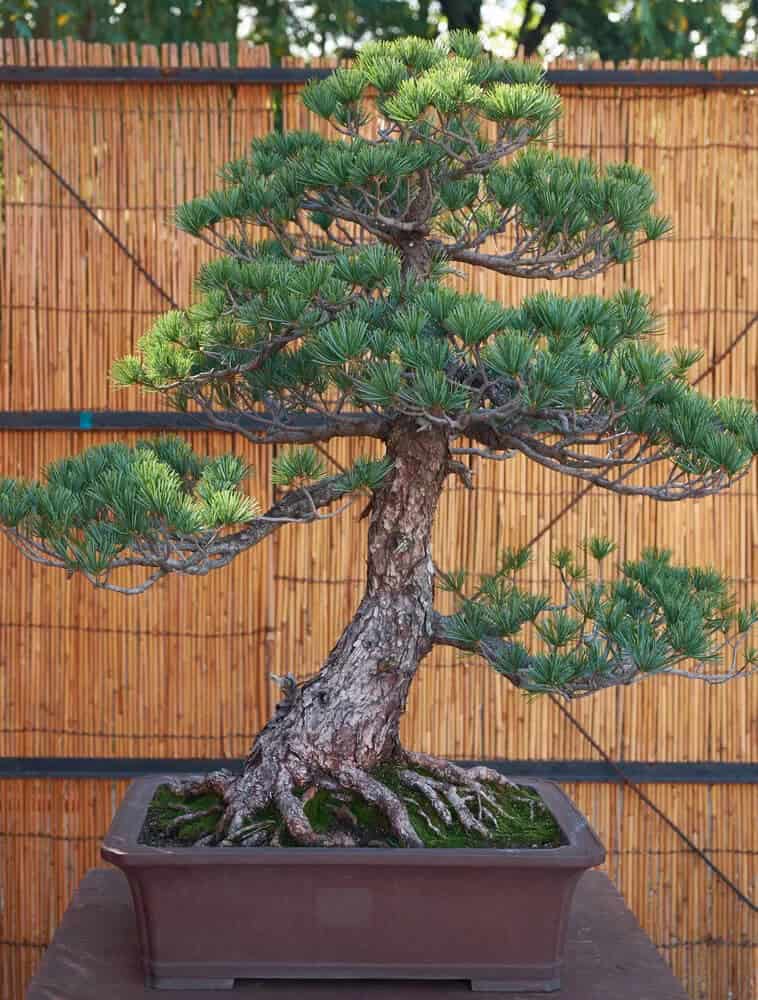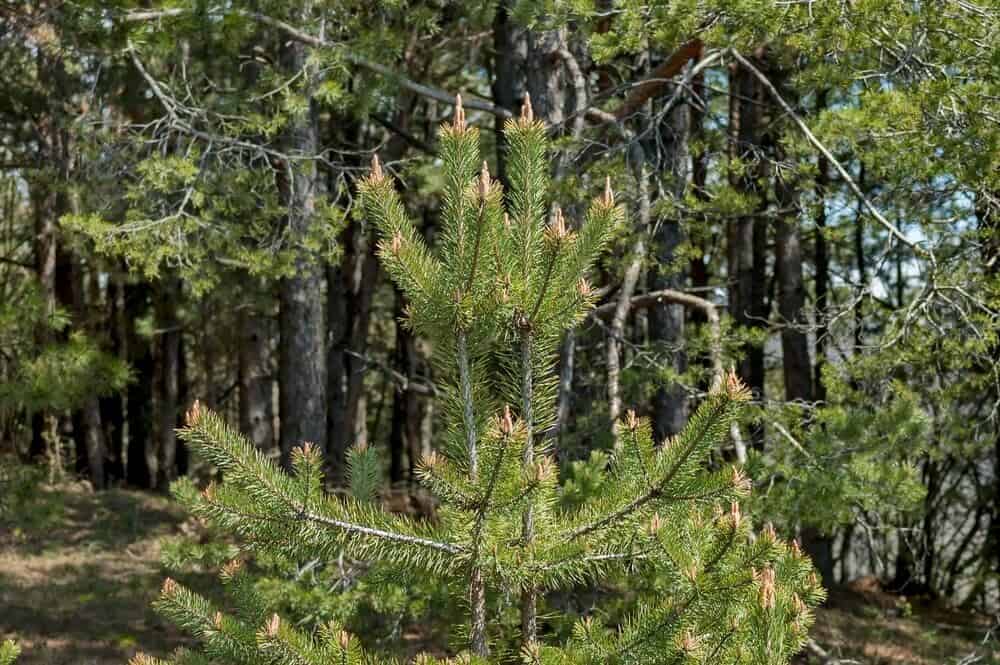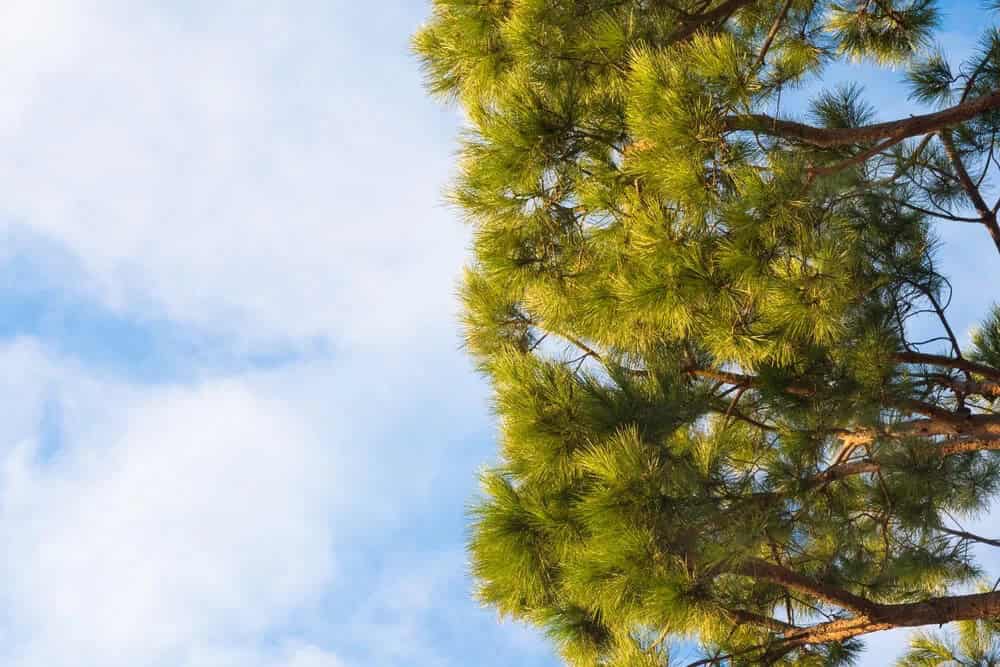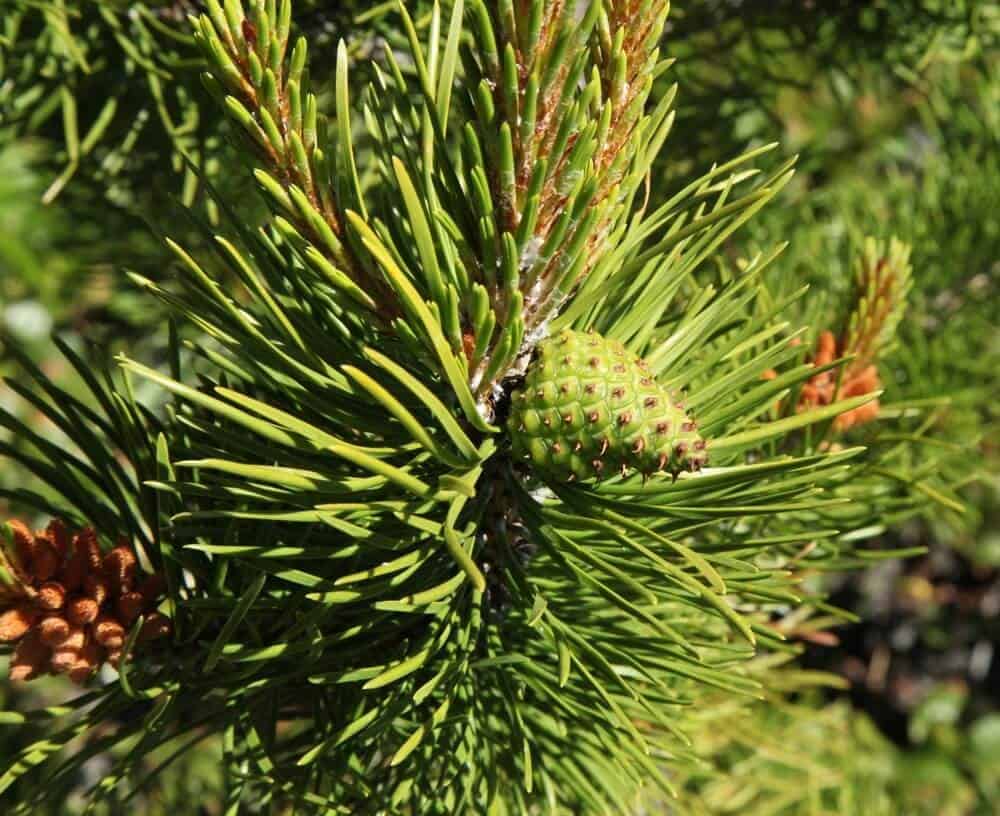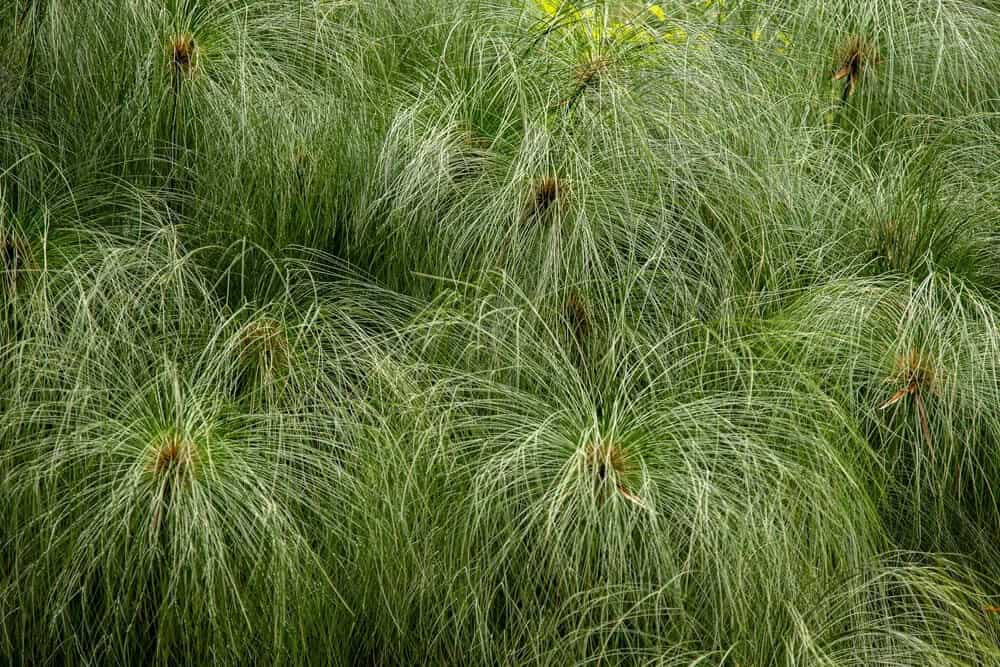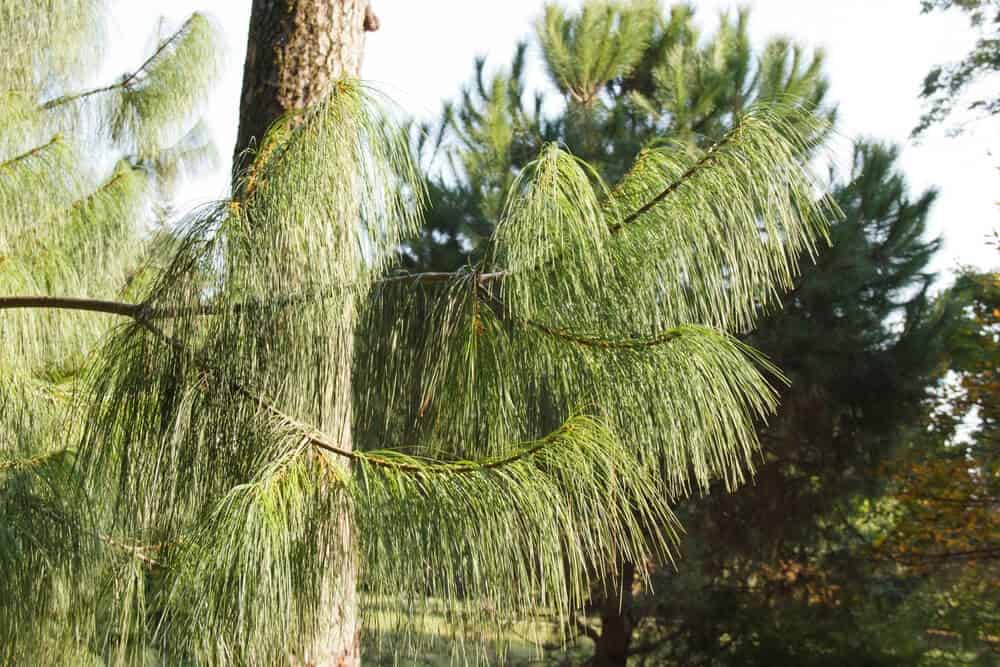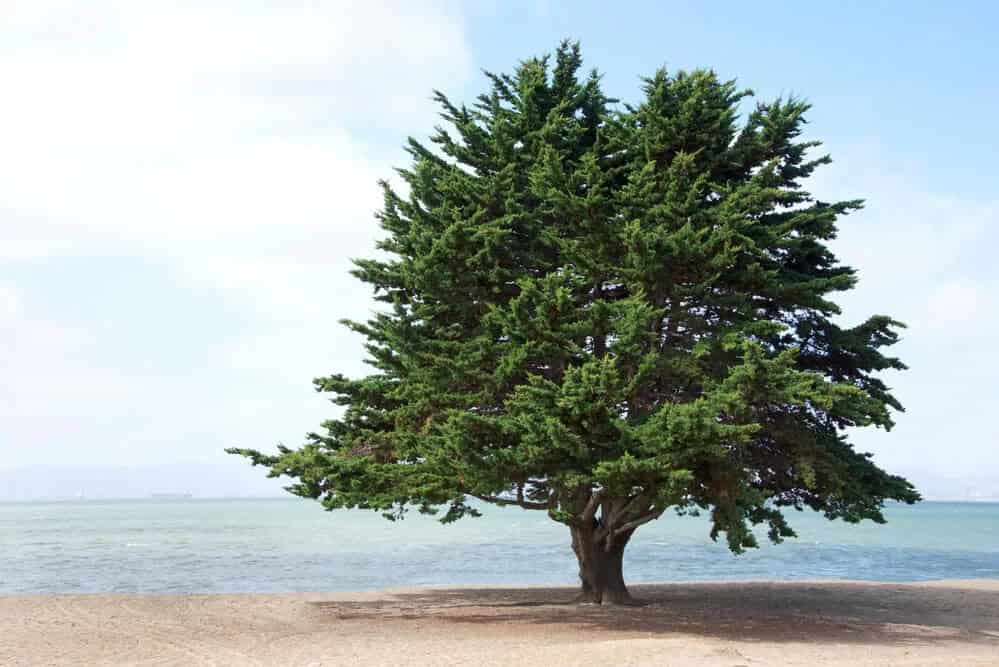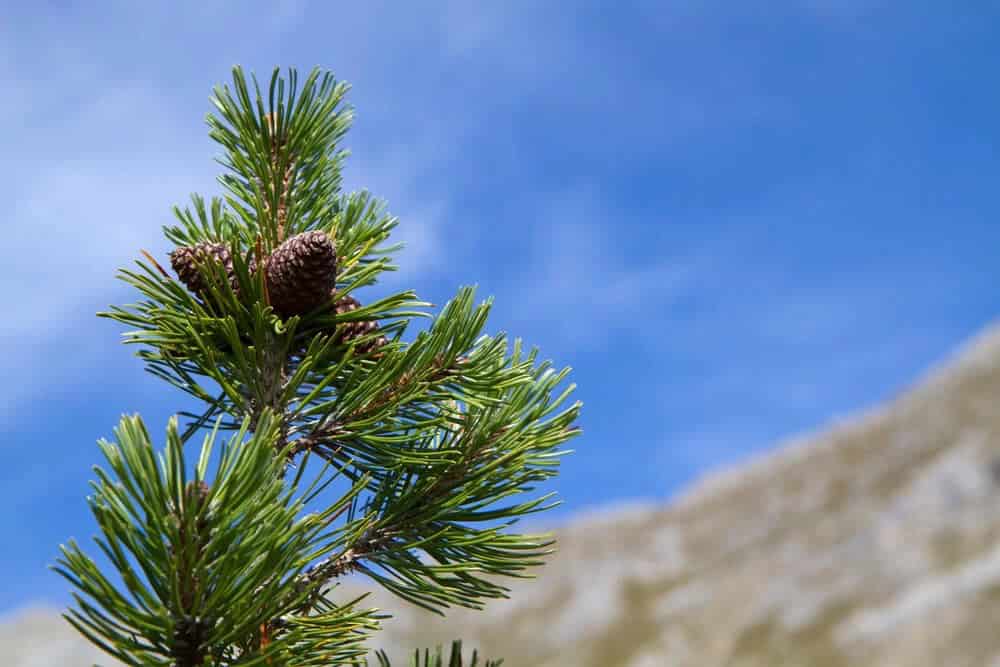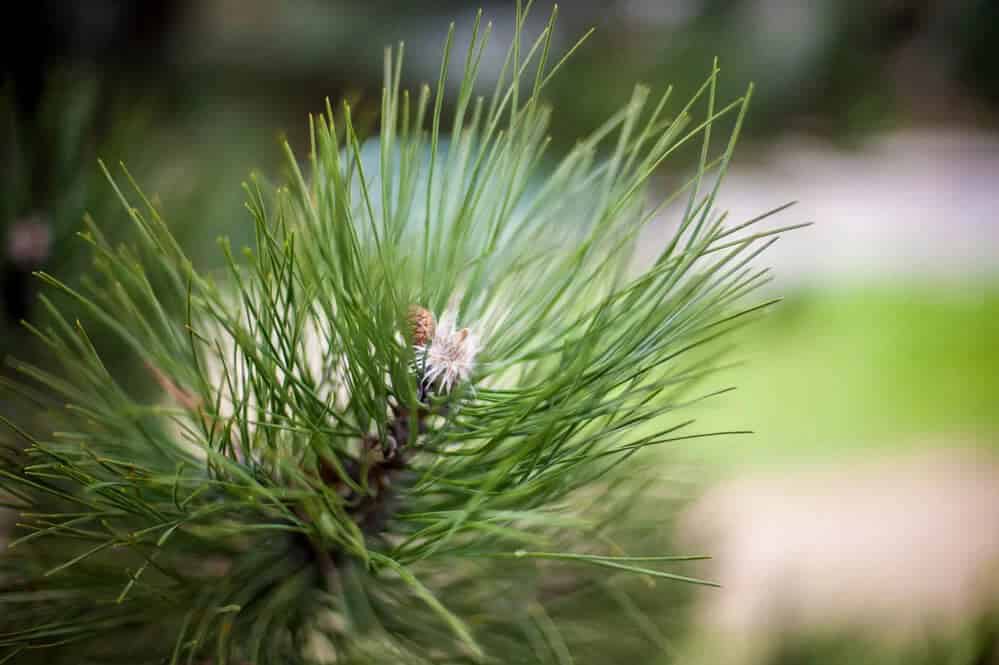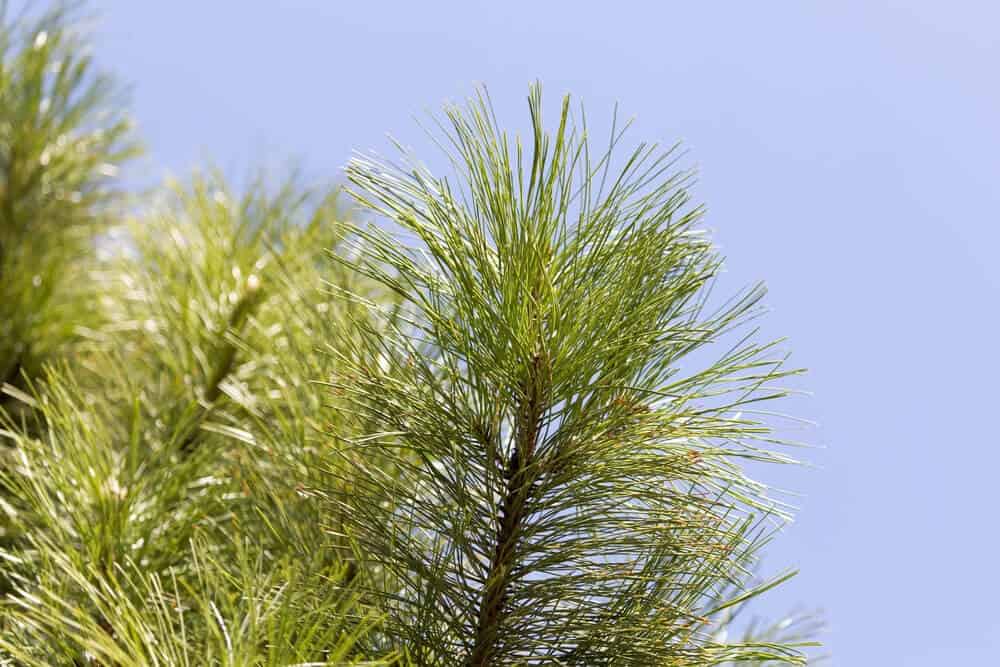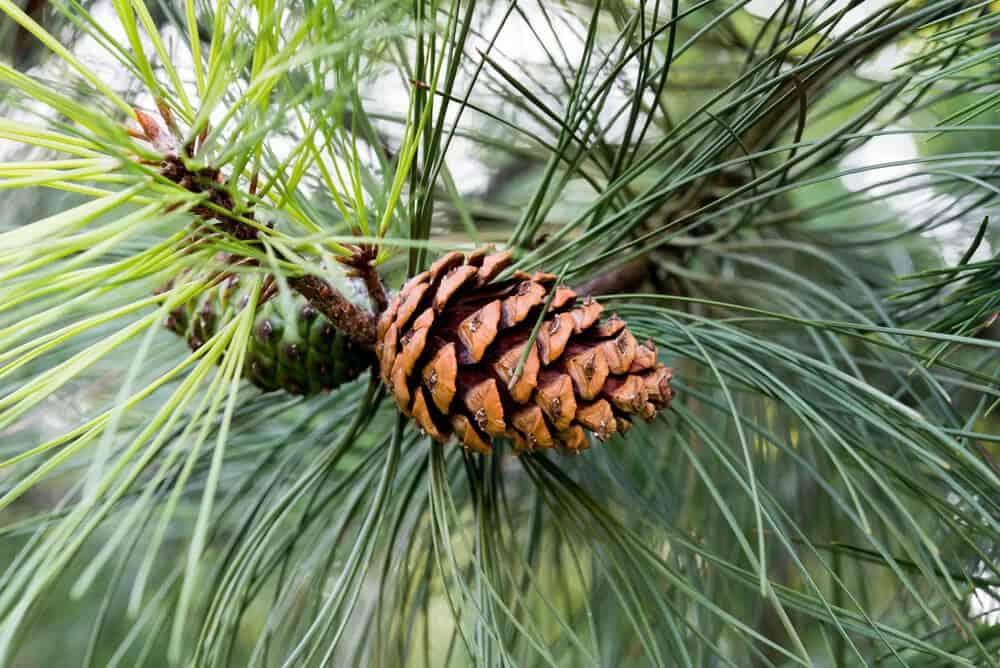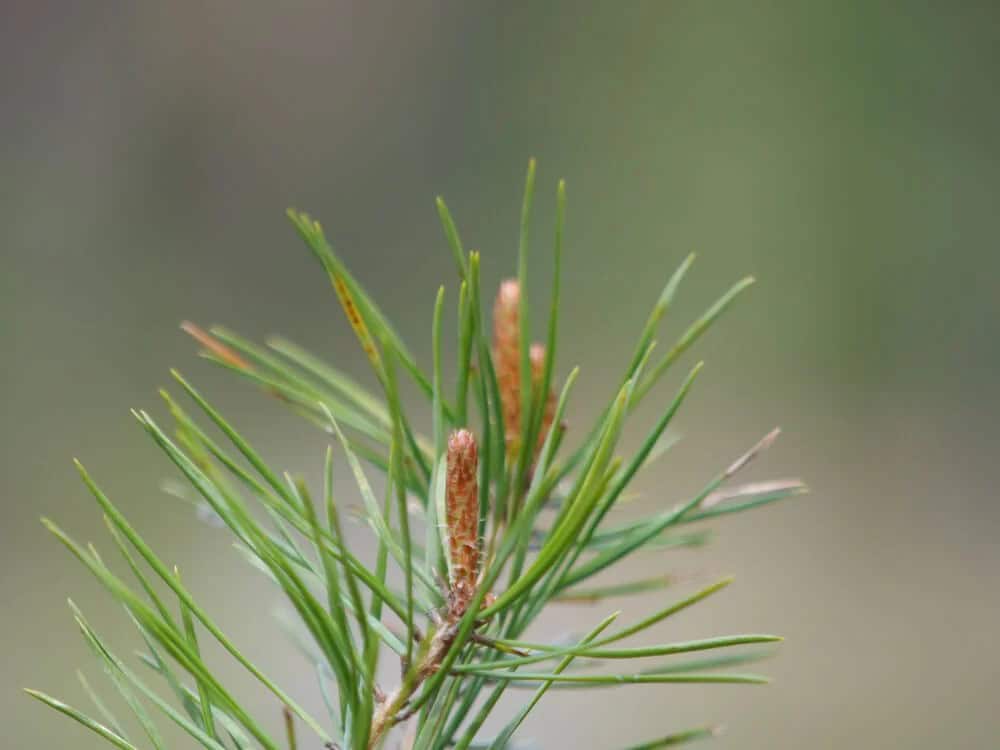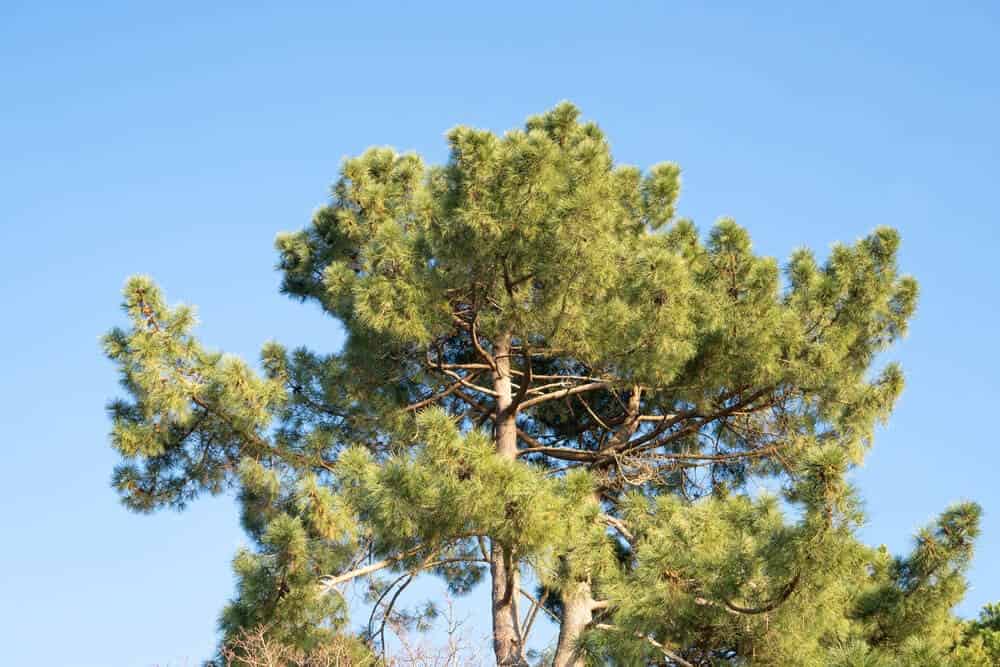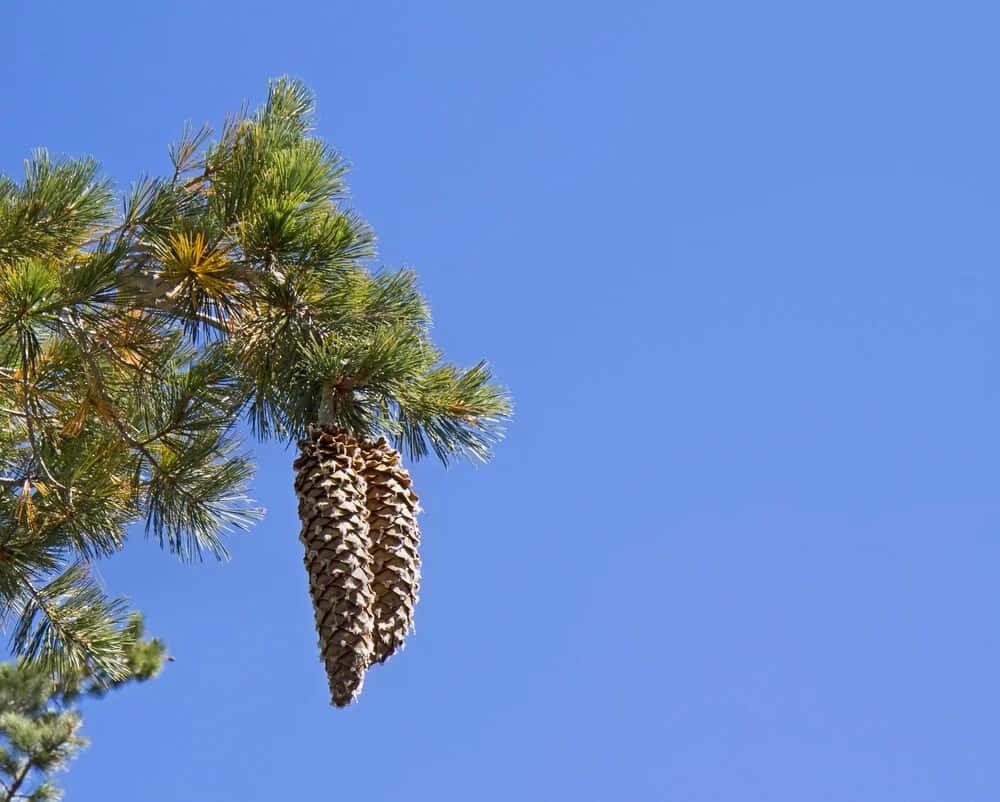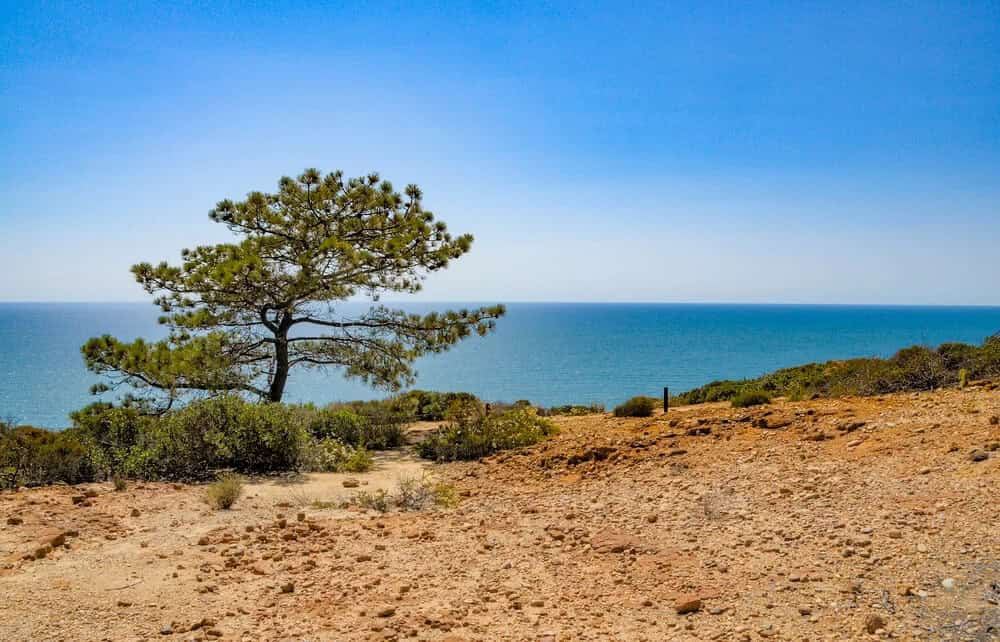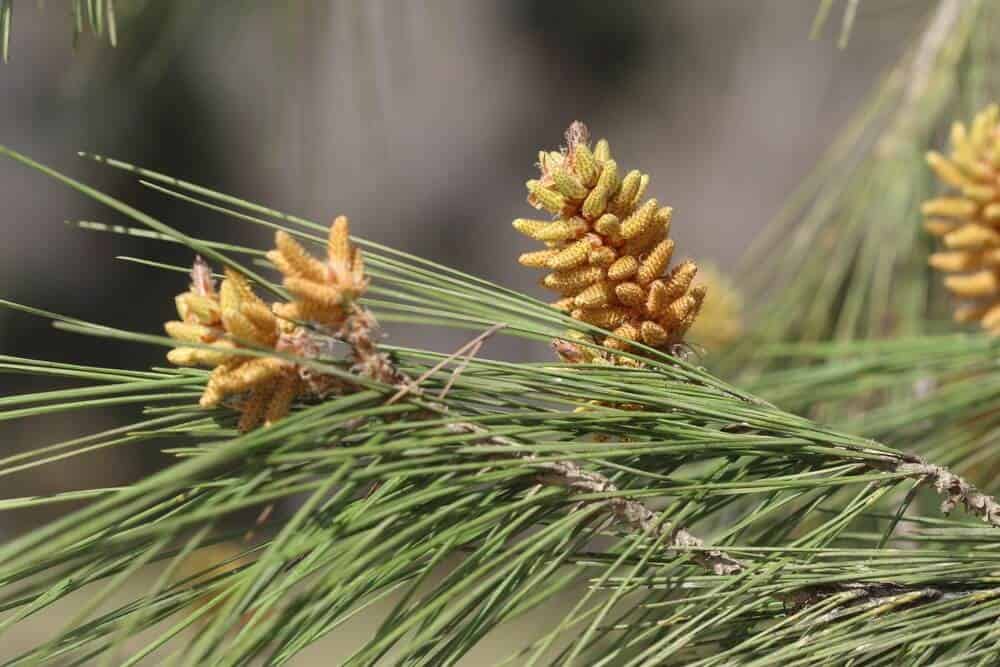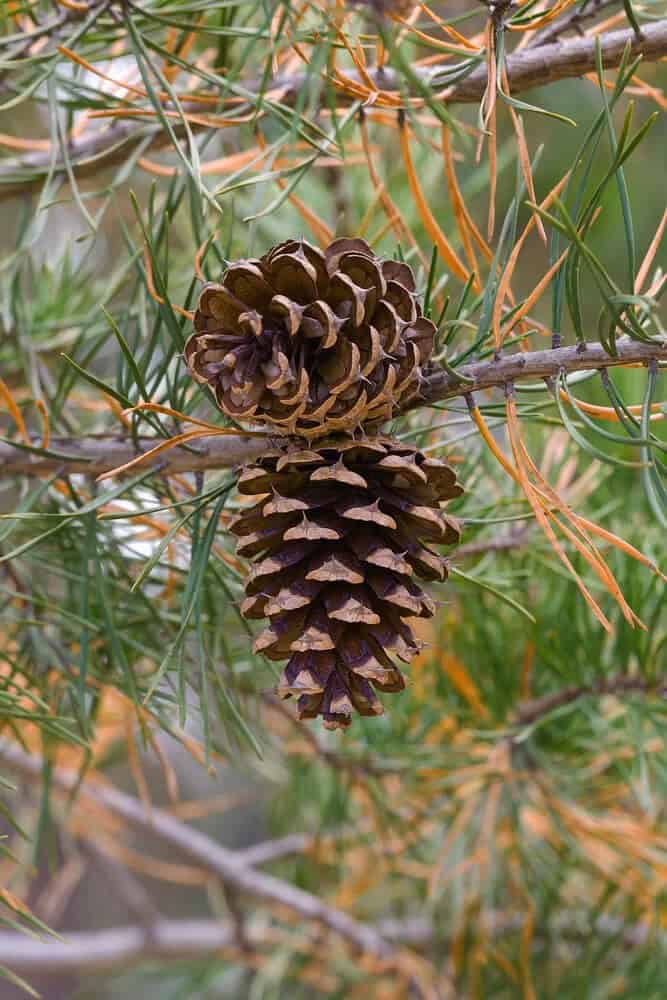Across the globe, there are over a hundred distinct species of pine trees, thriving in diverse environments that span from chilly regions to deciduous forests and even hot, humid climates. Their adaptability is truly remarkable, as they can take on various shapes and sizes depending on the conditions they’re exposed to. In this article, we’ll delve into some of the most prevalent types of pine trees, exploring their unique characteristics and habitats.
Key Takeaways
Pine trees are instantly recognizable due to their unique foliage, comprising clusters of needle-like leaves that typically range from two to five. The seeds of these trees mature within seed cones, which can take on various shapes, including elongated and narrow or egg-like forms. In terms of hardiness, most pine species thrive in USDA zones 5 through 8; however, some are capable of tolerating temperatures as low as those found in Zone 3, while others may grow well into Zone 11.
Notably, many pine trees can reach towering heights of over 100 feet or more when given the right conditions. When it comes to landscaping, it’s often a good idea to prioritize native species over invasive ones that might outcompete local flora and gain a foothold in your garden.
38 Types of Pine Trees
Aleppo Pine (Pinus halepensis)
The Aleppo Pine, also known as the Jerusalem pine, is a highly invasive tree species that has earned a reputation for being one of the top five most invasive pines globally. Its seeds are dispersed by wind, allowing it to effortlessly colonize burned-out forests and outcompete native vegetation. This medium-sized tree typically reaches heights between 30 to 65 feet and spreads up to 15 to 20 feet wide. The seed cones, measuring 2 to 4.7 inches in length, take around three years to mature.
The Aleppo Pine is adaptable and thrives in USDA grow zones 8-11, where it can form dense stands that displace native species. Its leaves are a characteristic greyish-green color, ranging from 2.4 to 5.9 inches in length.
Austrian Pine (Pinus nigra)
The Austrian Pine, while not an invasive species, exhibits remarkable adaptability, spreading effortlessly across North America. Although it’s not native to the United States, it thrives in USDA grow zones 5 – 8, where it can reach impressive heights of 40 to 100 feet and widths of 20 to 40 feet.
With multiple subspecies, this towering pine tree boasts a unique combination of features, including its distinctive fascicles bearing two leaves each, which range from pale or dark green in color, with varying degrees of stiffness or pliability. Leaf length stretches from approximately one and a half to seven and a half inches, while the tree’s gray or brown bark features deep grooves, adding character to its robust appearance.
Bristlecone Pine (Pinus aristata)
The Bristlecone Pine, also referred to as the Hickory Pine or Rocky Mountain Bristlecone, boasts an unconventional appearance. Its twisted trunk and irregular shape give it a shrub-like demeanor. A distinctive feature is its grey to reddish-brown bark, which showcases one to one-and-a-half inch long blue-green leaves that grow in clusters of five. As for its cones, they measure 2.4 to 4.3 inches in length and transform into prickly, egg-shaped structures when ripe.
This hardy tree thrives in the harsh environments of the Rocky Mountains, specifically in Colorado and Northern New Mexico, where it inhabits tree lines in cold, dry climates. It’s capable of growing in USDA zones 3 to 7. When mature, the Bristlecone Pine can reach impressive heights of eight to thirty feet, with a spread of ten to fifteen feet wide.
Canary Island Pine (Pinus canariensis)
The Canary Island Pine’s origins are rooted in the Canary Islands, where it is a native species that has not naturalized in the United States. Its timber is commercially valuable, making it a popular choice for cultivation. The tree boasts a striking appearance, with a straight and tall trunk supporting bright green leaves that can reach up to 12 inches in length. The bark is thick and reddish-brown, featuring subtle light grooves. Notably, the seed cones can stretch up to 9 inches long.
While this tree cannot thrive in cold climates, it proves adaptable to most soil types and USDA growing zones 9-11. In ideal conditions, it can reach heights of 50-80 feet and widths of 20-30 feet.
Chihuahuan White Pine (Pinus strobiformis)
The Chihuahuan pine is a species that draws its name from its geographical origins, thriving in the regions surrounding Chihuahua, Mexico, as well as the mountainous areas of New Mexico and Arizona. This evergreen tree flourishes within USDA Growing Zones 5-9, reaching maturity heights of 80 to 100 feet with a spread of approximately 20 to 40 feet. Notably, it can easily be mistaken for the Limber Pine, which is also prone to hybridization with this species.
Characterized by its straight and slender profile, the Chihuahuan pine boasts small, soft leaves that are a shade of blue-green and grow in groups of five. Its cones, while relatively small, are creamy-colored and can reach lengths of up to 2.5 inches. Notably, these cones serve as an important food source for various wildlife species.
Chinese Red Pine (Pinus tabuliformis)
While the Chinese Red Pine is a sought-after ornamental tree, its non-invasive nature makes it an attractive addition to any landscape. Its versatility extends beyond mere aesthetics, as it can be utilized for lumber and even cultivated as a Bonsai tree. A notable feature of this evergreen is its striking grayish-brown bark and dark green foliage. The leaves themselves are characterized by their soft texture and measured length of two to six inches, often growing in pairs.
At maturity, the seed cones take on an egg-like shape and can remain viable for a few years, serving as a valuable food source for both wildlife and humans. Native to Northern China and Northern Korea, the Chinese Red Pine is adaptable to USDA grow zones 5 to 8, with mature specimens reaching heights of thirty to fifty feet and widths of up to twenty feet.
Coulter Pine (Pinus coulteri)
The Coulter Pine is an extraordinary species, boasting the heaviest seed cone in the world. Mature cones can weigh anywhere from 4.4 to 11 pounds, making them a prized food source for local wildlife. Its hardiness and drought-tolerant nature also make it a popular choice for landscaping in North America. However, its natural population is considered near-threatened, primarily due to human activities.
You’ll typically find this resilient tree thriving on the coastal mountains of California, extending down into Mexico.
Characterized by gray-brown bark featuring deep grooves, the Coulter Pine’s straight or twisty trunk adds an element of uniqueness to its appearance. As a USDA hardiness zone 8 to 10 plant, it requires specific conditions to thrive. When mature, this tree can reach impressive heights of 30 to 75 feet and spread outwards by up to 20 to 30 feet.
Dwarf Mugo Pine (Pinus. Mug var pumilio)
The Dwarf Mugo Pine’s compact nature sets it apart from its larger counterpart, with a mature height of around five feet and a width of six to ten feet. This diminutive evergreen has gained popularity for landscaping, particularly in small yards or gardens where its modest proportions are a welcome feature. While it can thrive in various soil types and pH levels, the Dwarf Mugo Pine demands full sun and well-draining soil to reach its full potential.
With no invasive tendencies, this species is an excellent choice for gardeners seeking a low-maintenance addition to their outdoor spaces. In terms of hardiness, the Dwarf Mugo Pine excels in cold climates, adopting a shrub-like form as it grows. Its leaves grow upward, imparting a charmingly asymmetrical appearance that’s often harnessed in Bonsai cultivation. Native to central and Southern Europe’s mountainous regions, this evergreen can be grown in USDA zones 3 through 7.
Eastern White Pine (pinus strobus)
The Eastern White Pine is renowned for its picturesque shape, making it a popular choice as Christmas trees. This versatile tree thrives in USDA zones 4-9, specifically in the northeastern United States where it can grow up to 100 feet tall with a spread of 20-40 feet at maturity. Its straight trunk is covered in grey-brown bark, while its leaves are a unique blend of green and blue-grey hues, growing in groups of five and reaching lengths of 2-4 inches.
The seed cones of the Eastern White Pine can grow quite large, measuring up to 8 inches in length. Unfortunately, logging has had a devastating impact on natural white pine forests, leaving behind only 1 percent of the original population.
Eldarica Pine (Pinus brutia var eldarica)
The classification of Eldarica pine remains somewhat disputed, with some experts suggesting it might be its own distinct species. Nevertheless, many authorities consider it a subspecies of the Turkish pine. While sharing similarities with its Turkish counterpart, Eldarica pine is characterized by its denser and more upright growth habit, as well as enhanced resilience to heat, wind, and drought.
This hardiness has made it a sought-after choice for landscaping in desert states, particularly in USDA zones 6 through 10. The tree can reach heights of 30 to 80 feet and spread 15 to 30 feet wide. Eldarica pine’s foliage consists of 3- to 6-inch long leaves that grow in pairs, while its seed cones measure between two and three and a half inches in length. Interestingly, these cones serve as a valued food source for local wildlife.
French Dark Green Scots Pine (Pinus sylvestris French Dark Green)
While the French Dark Green Scots Pine shares many similarities with its Scottish counterpart, there are some key differences that set it apart. For instance, its leaves are shorter and a deeper blue-green hue, while its bark is a rich red-brown color. This tree’s traditional Christmas tree shape also makes it a popular choice for landscaping purposes.
One of the main advantages of this variety is its less aggressive growth habit, making it an excellent option for those looking to avoid the Scots Pine’s more vigorous spread. Additionally, the French Dark Green Scots Pine requires full sun to thrive, but its adaptability and ability to grow forty to fifty feet tall with a width ranging from twenty to thirty-five feet make it suitable for USDA growing zones 3 to 8.
Gray Pine (Pinus sabiniana)
The Gray Pine is a unique species that thrives exclusively in the foothills of California, where it can tolerate both full sun and partial shade. Its adaptability also allows it to flourish in hot, arid environments with minimal water or irrigation requirements. The tree’s crown shape varies from cone-shaped to irregular, with distinctive dark brown or black grooved bark. In terms of foliage, the Gray Pine’s leaves can reach lengths of up to 12 and a half inches, boasting a muted blue-green hue.
Its seed cones are typically egg-shaped or cylindrical in appearance. Notably, this species can grow quite tall, reaching heights between 20 and 83 feet at maturity, with a mature width ranging from 20 to 40 feet. The Gray Pine is generally found in USDA growing zones 8 through 10.
Jeffrey Pine (Pinus jeffreyi)
The Jeffrey Pine is a towering evergreen tree that owes its name to John Jeffrey, a Scottish botanist who explored the western United States in the 19th century. Characterized by its slender and upright growth habit, the Jeffrey Pine has a somewhat sparse canopy. Its bark boasts a unique fragrance reminiscent of vanilla or butterscotch, while its leaves emerge in clusters of three, reaching lengths of up to 10 inches.
This majestic tree typically thrives in mountainous regions at elevations ranging from 1,500 to 10,200 feet. In the wild, the Jeffrey Pine is native to the western United States, with habitats spanning California, Oregon, Nevada, and parts of Mexico. It excels in zones 5 to 8, where it can grow up to 140 feet tall, with a spread of 20 to 30 feet wide.
Japanese Black Pine (Pinus thunbergia)
The Japanese Black Pine, native to Japan and Korea, has thrived in parts of the United States, becoming a popular choice for landscaping. However, when possible, opting for a native pine is recommended. This species grows well in USDA zones 5-8. Its impressive stature reaches 20-60 feet tall, with a wide spread of 12-20 feet. The trunk can grow up to 6.5 feet across, boasting dark-colored bark that matures to nearly black. Leaves emerge in clusters of two, measuring 2.4-4.7 inches long.
Seed cones, egg-shaped and growing in clusters of two or three, quickly drop their seeds once released.
Japanese White Pine (Pinus parviflora)
The Japanese White Pine, a staple in many Bonsai collections, boasts stunning purple bark and vibrant blue foliage. Its trunk can expand up to 3.3 feet in diameter, while the tree’s five-leafed groups measure approximately 1 to 2 inches in length. While it may be mistaken for its close relative, the Eastern White Pine, the Japanese variety is distinguished by shorter leaves and seed cones.
A medium-sized tree with a moderate growth habit, it thrives in USDA Growing zones 6 to 9 and does not spread or naturalize aggressively. Reaching heights of 20 to 50 feet and widths of 25 to 50 feet, this versatile species is well-suited for a variety of landscapes.
Lacebark Pine (Pinus bungeana)
The Lacebark Pine is a distinctive species that stands out due to its unique feature of having multiple trunks, which exfoliates into a lacy or mottled pattern on the bark. This slow-growing pine lacks self-fertilization capabilities, making it improbable for naturalization and invasive behavior. Its leaves appear in clusters of three, measuring 2-4 inches in length, with a rigid texture. Furthermore, it produces small, individually growing seed cones.
Notably, the Lacebark Pine is not well-suited for hot climates; its native habitat lies in Asia, where it thrives in USDA grow zones 4-7. Typically, this species reaches heights of 30-50 feet and spreads to a width of 20-35 feet.
Limbar Pine (Pinus flexilis)
The Limbar Pine is a resilient tree that can flourish in challenging soil conditions. Its trunk exhibits varying degrees of straightness or twistedness, reaching diameters exceeding 6 feet, with smooth gray bark as its distinguishing feature. The tree’s foliage grows in clusters of five, boasting dark green leaves that reach up to 2.75 inches in length. Narrow, egg-shaped cones are another characteristic of this species.
Native to the mountains of Southwest Canada, California, and Arizona, the Limbar Pine thrives in zones 4 to 7. Upon reaching maturity, it can grow to be anywhere from 20 to 50 feet tall and 10 to 30 feet wide.
Loblolly Pine (Pinus taeda)
The Loblolly Pine thrives in moist, swampy environments, making it an ideal candidate for areas with wet and soggy soil conditions. Its rapid growth is accompanied by the development of a straight trunk, which becomes more pronounced as the lower branches senesce, giving the tree a high-crowned appearance. Its foliage consists of 4 to 9-inch long, yellow-green leaves that grow in clusters of three, providing a striking contrast against its reddish-brown bark.
Reaching heights of 50 to 80 feet with a spread of up to 35 feet wide, this pine tree can be found in USDA grow zones 6 through 9, spanning from New Jersey to Florida and as far west as Texas.
Lodgepole Pine (Pinus contorta)
The Lodgepole Pine is a tree that defies straightforward naming conventions! Its name seems to suggest a tall and straight profile, but the inclusion of ‘contorta’ implies a twisty nature. However, this apparent contradiction is resolved when considering the tree’s location. Coastal Lodgepole Pines tend to be short and twisted, whereas inland varieties are more likely to grow taller and straighter.
Despite this ambiguity, the attractive pine tree can thrive in a range of environments, from exposed coastlines to swampy wetlands. Its characteristic features include brown, grooved bark, clusters of 2 yellow-green leaves, and egg-shaped cones. The tree’s hardiness is demonstrated by its ability to grow across zones 3 to 8, spanning Southern Alaska and Canada, as well as California and Colorado.
In terms of size, varieties range from 10 to 32 feet tall or 20 to 164 feet tall and 10 to 30 feet wide.
Longleaf pine (pinus palustris)
The Longleaf pine’s distinguishing feature is its impressive leaf length, with leaves growing in clusters of three and stretching up to 18 inches long. The yellowish-green foliage is complemented by the tree’s distinctive orange-brown bark.
In terms of physical appearance, the Longleaf pine boasts a straight trunk and a rounded crown. It can reach heights of 60 to 100 feet and spread outwards to 20 to 40 feet wide, making it a striking presence in its natural habitat.
While the tree is commercially valuable for its timber and pulp, it faces threats to its survival in the wild. Typically found in the Southeast Atlantic States, from Florida up to USDA growing zones 7-10, it can also be spotted as far west as Texas.
Mexican Weeping Pine (Pinus patula)
The Mexican Weeping Pine presents a refined silhouette, boasting a statuesque trunk and delicate tufts of leaves that drape elegantly from above. The seed cones, shaped like eggs, are often found in clusters of two. While this tree is commonly used for landscaping purposes, it’s essential to note its potential to become invasive if not properly contained. Its wood is also prized for lumber production.
The Mexican Weeping Pine thrives in conditions offering light shade and can be identified by its characteristic drooping foliage. In terms of size, the tree can grow up to 50-100 feet tall, with a spread reaching 20-30 feet wide. Originating from Eastern and Central Mexico, it tends to do well in USDA growing zones 8 to 9, where it can flourish under suitable conditions.
Monterey Pine (Pinus radiata)
While the Monterey Pine is cultivated for its timber and pulpwood, its natural population is under threat due to the devastating effects of Pine Canker disease. This species is notable for its rapid growth rate and robust trunk, which can reach diameters of up to three feet and boast dark gray bark. The tree’s yellow-green leaves typically cluster in groups of two, with a mature height ranging from 50 to 100 feet and a width of 25 to 35 feet.
In terms of seed production, the cones open in response to fire and can remain viable for an impressive twenty years, taking on an asymmetric egg-like shape. As a native California species, it thrives in USDA growing zones 7-10, primarily found along the central coast.
Mugo Pine (Pinus mugo)
The Mugo Pine is a species marked by its adaptability, exhibiting characteristics that range from small tree-like formations to sprawling shrubs. Despite its varying forms, this plant tends to spread wider than it grows tall, with heights ranging between 5 and 25 feet and widths extending up to 30 feet in some cases. Its bark develops a distinctive brown-grey hue, accompanied by stiff, dark green leaves that cluster together in pairs.
This unique tree offers an intriguing addition to landscaping designs, serving as an effective tool for combating soil erosion. It thrives in sandy soil, but its hardiness also extends to clay-based environments. Typically found growing in bogs and just below tree lines, the Mugo Pine’s natural habitats are characterized by damp conditions.
Originating from the mountains of central and Southern Europe, this species has successfully adapted to various climates and can thrive in USDA zones 2 through 7, making it a versatile choice for gardeners across different regions.
Norfolk Island Pine (Araucaria heterophylla)
The Norfolk Island Pine, despite its name, is actually a conifer rather than a true pine tree. Its leaves are a vibrant green and relatively short, measuring just ½ inch in length. In contrast, the seed cones can grow to impressive lengths of over 4 inches. The tree has a straight trunk adorned with dark gray bark. When young, the Norfolk Island Pine makes an excellent houseplant. As it matures, it can thrive outdoors as a landscape plant, provided temperatures remain above 30 degrees Fahrenheit.
Native to Norfolk Island and the South Pacific, this conifer is particular about its growing conditions, requiring USDA zones 9-11 to flourish. In its natural habitat, the tree can grow up to 100 feet tall and 60 feet wide. When cultivated indoors, however, it will typically reach a height of around 5 feet and spread out 4 feet in width.
Pinyon Pine (Pinus edulis)
With its delectable edible nuts, the Pinyon Pine is a standout species. Reaching heights of 15-30 feet and widths of equal measure, this compact tree boasts reddish-brown bark featuring shallow grooves, while its foliage grows in clusters of one to three leaves with a distinctive blue-green hue. The cones, shaped like eggs when open, are another notable feature. Notably adaptable, the Pinyon Pine can thrive in a range of soils – including acidic ones provided they drain well.
You’re likely to find it growing alongside junipers in the southwestern and central United States, where zones 5-8 provide optimal conditions for its growth.
Pitch Pine (Pinus rigida)
The Pitch pine tree is a remarkable species, boasting fire-resistant properties and a robust build. Its trunk may appear straight or curved, often accompanied by a rounded or irregular crown shape. The tree’s yellow-green needles grow in clusters of three to five, measuring 2 to 4 inches in length. Additionally, its egg-shaped seed cones emerge in small groups. This adaptable pine thrives in poor soil conditions, including sandy, acidic, and nutrient-poor environments.
It is well-suited for growing zones 4 to 7 in eastern North America, where it can reach mature heights of 30 to 100 feet and spread up to 20 to 50 feet wide.
Pond Pine (Pinus serotina)
The Pond Pine is remarkably resilient, thriving in waterlogged soils that would be challenging for many other tree species. What’s more remarkable, however, is the unique way in which it disperses its seed cones – they only open after being exposed to a forest fire. This extraordinary adaptation allows the tree to spread its seeds effectively, despite the challenging conditions in which it grows.
This pine variety is characterized by its twisted trunk, adorned with grooved, reddish-brown bark and an irregularly shaped canopy that adds to its distinctive appearance. Its leaves grow in clusters of three to five, a characteristic that can make it easily mistaken for the Loblolly Pine.
Native to the Atlantic coastal regions of the United States, from New Jersey down to Florida and growing zones 7-9, this tree can reach impressive heights of 30-70 feet at maturity, with a spread of 20-45 feet wide. However, its growth is sometimes stunted by the wet marshy environments in which it thrives, resulting in smaller but equally striking specimens.
Ponderosa Pine (Pinus ponderosa)
In Western North America, the Ponderosa Pine thrives in USDA grow zones 3-8, boasting a remarkable height of 60 to 100 feet at maturity, with a spread of 25 to 30 feet wide. This majestic tree’s leaves cluster in groups of 2 to 5, measuring between 2 ¾ and 11 ¾ inches long. Its cones are egg-shaped, featuring triangular points, while the bark displays a deep brown to black hue, punctuated by irregular grooves.
The Ponderosa Pine is prized for its lumbar, ornamental bark, and leaves, with the bright green pine needles serving as a distinguishing feature among other pine species.
Red Pine (Pinus resinosa)
The Red Pine is a standout choice for landscaping, boasting a stately appearance with a straight trunk featuring reddish-brown bark adorned with grooves. Its narrow, rounded crown and clusters of deep yellow-green leaves, arranged in pairs of two, create a visually appealing display. When seed cones are open, they resemble egg-shaped orbs. Maturity typically reaches heights between 50 to 80 feet, with a spread ranging from 15 to 30 feet wide.
This versatile tree thrives in diverse moisture conditions and soil types, capable of self-pollination. Its genetic consistency ensures uniform characteristics. Native to Canada, Pennsylvania, and Minnesota, it flourishes in USDA grow zones 3 to 7.
Sand Pine (Pinus clausa)
The sand pine is typically discovered in the sandy soil of Florida and Alabama, where it exhibits a unique combination of characteristics. Its trunk may be straight or crooked, with branches that are both heavy and sprawling, all covered in gray bark. A distinctive feature of this species is its leaves, which grow in pairs and can reach lengths of 1 to 4 inches while maintaining their dark green color.
When it comes to seed cones, the sand pine is notable for requiring fire to open them fully. This hardy tree thrives in sandy, acidic soil and can even tolerate partial shade. In fact, it’s also known by several other names, including Spruce Pine and Scrub Pine. As a mature tree, the sand pine can grow up to 15 to 60 feet tall and spread out as wide as 15 to 25 feet, making it well-suited for USDA growing zones 7 to 10.
Scots Pine (Pinus sylvestris)
Scots Pine is a popular Christmas tree variety that boasts unique characteristics. With several varieties to choose from, this fast-growing pine thrives in diverse environments. Its ability to outgrow nearby plants or trees has enabled it to naturalize in the northern regions of the United States. Characterized by its 1-3 inch long, stiff leaves with a blue-green hue, Scots Pine can reach heights of 20-60 feet and widths of 30-40 feet.
This hardy tree is adaptable, growing well in USDA zones 2 to 7. Despite originating from Europe and Asia, it has successfully established itself in the United States, showcasing its remarkable resilience.
Shortleaf Pine (Pinuys echinate)
The Shortleaf Pine is a resilient species that can tolerate some forest fires, making it a valuable resource for lumber, pulp, and ecological restoration initiatives. Its old-growth habitats are particularly noteworthy, as they provide crucial shelter for the federally endangered red-cockaded woodpecker. These pines boast impressive stature, with trunks growing up to 50-80 feet tall and 20-35 feet wide, adorned with a distinctive red-brown bark featuring pockets of resin.
The leaves emerge in clusters, reaching lengths of up to five inches. Native to the southeastern United States, Shortleaf Pines thrive in growing zones 6 to 9, from New Jersey’s northern reaches to North Florida’s southern coast. They are remarkably adaptable, able to flourish in a range of environments, including rocky soil, flood plains, and full-sun conditions at elevations ranging from sea level to 3,000 feet.
Single Leaf Pinyon Pine (Pinus monophylla)
The single-leaf pinyon pine stands out for its unique characteristics, making it a fascinating tree to learn about. Measuring between 15 and 50 feet tall and 15 to 20 feet wide, this smaller tree presents a challenge when it comes to propagation and landscaping. Its solitary leaves per fascicle set it apart from other pines, with the single-leaf pinyon pine being the only one in the world featuring this distinct trait.
Furthermore, its egg-shaped to round cones are a distinguishing feature of this species. The single-leaf pinyon pine can be found thriving in Southwestern North America, specifically within growing zones 6 to 8.
Sugar pine (Pinus lambertiana)
The Sugar Pine stands out as a remarkable species due to its exceptional height and impressive size. Reaching heights of 100 to 200 feet, with a spread of 30 to 50 feet, this majestic tree boasts an enormous trunk that can reach up to 10 feet in diameter. Moreover, it produces the longest pine cones in the world, which can grow as long as 20 inches and weigh over 4 pounds each. The Sugar Pine’s distinctive appearance is characterized by its gray to cinnamon-colored bark, featuring deep grooves.
The tree typically produces five leaves per cluster, displaying a beautiful blue-green hue. Native to the mountains of the western United States, it thrives in growing zones 6 through 9.
Torrey Pine (Pinus torreyana)
The Torrey Pine is a distinct species, confined solely to the coastal regions of San Diego County and Santa Rosa Island in California. Its twisted trunk and rounded crown are shaped by the relentless coastal winds, while its showy, purple-red to red-brown bark features deep grooves and ridges. Notably, it produces 6-11 inch leaves in clusters of five. The cones take three years to mature.
What makes this species truly exceptional is its rarity – it’s the most rare pine tree found in the United States. With a mere 4500 Torrey pines thriving in their natural habitat, it’s a wonder to behold. While it typically grows in zones 8-11, some specimens can reach impressive heights of 25-50 feet tall and 25-40 feet wide, making it a remarkable sight to behold.
Turkish Pine (Pinus brutia)
The Turkish pine is a versatile tree that thrives in warmer environments, tolerating USDA Growing zones 8-11. Its non-invasive nature makes it an ideal choice for ornamental landscaping in warm climates. This tree boasts a striking appearance, with a prominent trunk featuring vibrant orange-red bark adorned by deep grooves. The contrasting yellow-green leaves add to its visual appeal, growing in small clusters of two and reaching lengths of 4-6.5 inches.
In terms of seed cones, they begin as elongated structures before transforming into egg-shaped shapes upon opening. It takes approximately 1-2 years for the seeds to mature after the cones release them. The Turkish pine can grow to impressive heights of 30-115 feet and a width of 20-60 feet, making it an attractive addition to any landscape.
Virginia Pine (Pinus virginiana)
The Virginia Pine, also known as the Virginia Scrub Pine or Jersey Pine, is a species with invasive tendencies. This tree has the remarkable ability to rapidly colonize burned-out forests and even reproduce through self-fertilization. Its adaptability is matched by its physical characteristics: it typically grows between 50-80 feet tall and 20-30 feet wide, with a straight, twisted, or leaning trunk featuring gray-brown bark.
The crown can be flat or irregularly shaped, while the yellow-green leaves appear in clusters of two. This evergreen species thrives in the Eastern United States, spanning from Pennsylvania to Alabama and Georgia, and is well-suited for growing zones 4-8.
Western White Pine (Pinus monticola)
In the western United States, the majestic Western White Pine tree thrives in zones 4 through 8. This stately evergreen boasts grey, scaly bark and a sturdy trunk, with silvery-green leaves that grow in clusters of five. Its cones appear in dense groupings, reaching lengths of up to 10 inches. Reaching heights of 60 to 150 feet, with a spread of twenty to thirty feet, the Western White Pine is an impressive sight.
Unfortunately, this species has declined significantly due to the introduction of a fungus from Europe in the early 1900s.
Frequently Asked Questions About Pine Trees
What is the most common pine tree?
In the United States, the most widely recognized pine tree is the Eastern White Pine. This versatile species is prized for its rapid growth rate and versatility in both landscaping and lumber applications. Its popularity extends to the holiday season as well, with many families opting for it as their Christmas tree due to its attractive shape and natural aesthetic appeal.
Characterized by bluish-gray needles and grey-brown bark, the Eastern White Pine’s unique features have cemented its status as a favorite among pine enthusiasts.
How do pine trees grow?
Pine trees exhibit a unique growth pattern, characterized by annual spurts where both the trunk and crown experience significant expansion. This rapid growth can take anywhere from two to three years to unfold, culminating in the maturation of seed cones that eventually release their contents onto the ground. Should these seeds land in a suitable environment, they may germinate and give rise to a new pine tree, perpetuating the cycle of life.
Where are pine trees most common?
While pine trees can thrive in a variety of climates and growing zones, certain species have adapted to specific regions. Among the most well-known are the Eastern White Pine, Ponderosa Pine, Sugar Pine, and Red Pine. The Eastern White Pine tends to dominate the East Coast of the United States, whereas the Ponderosa Pine is more commonly found on the West Coast. This diversity in pine tree species allows them to flourish in a range of environments.
Are all Christmas trees pine?
While many Christmas trees are indeed pine trees, this isn’t always the case. A key characteristic of pine trees is that their leaves, or needles, grow in clusters of two, three, or five along the twig. If the needles instead sprout individually from the stem, it’s highly likely that you’re looking at a fir or spruce tree, rather than a pine tree.
What is the difference between a pine tree and a Christmas tree?
While some pine trees do make it onto the holiday decorating scene as Christmas trees, many others don’t quite fit the bill. Similarly, not all fir and spruce trees are suitable for this festive purpose. The key to distinguishing between these types lies in the way their needles grow. Pine tree needles always emerge from a single base in clusters of 2 to 5, whereas those on other Christmas tree species typically grow individually along the twigs.
